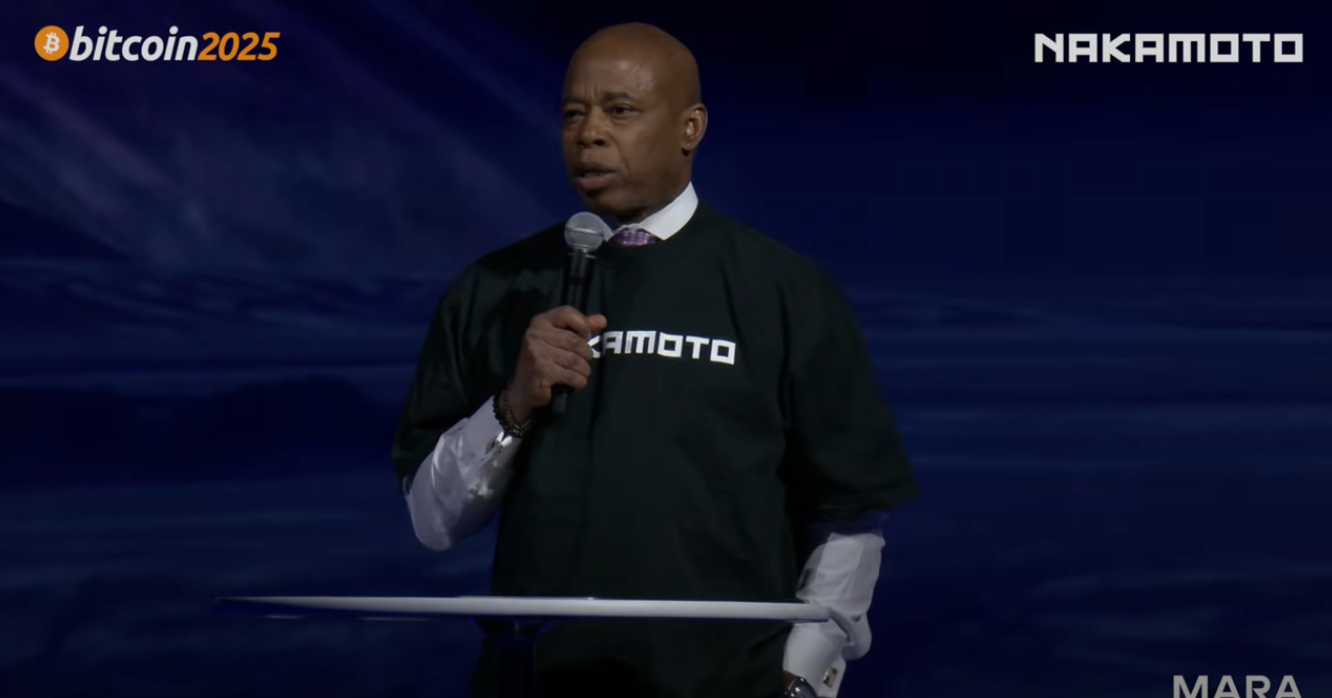Mayor Adams Asks Crypto Industry to Return to New York at Bitcoin 2025 Conference

New York City Mayor Eric Adams delivered a compelling address at the Bitcoin 2025 conference on Wednesday, urging crypto enthusiasts and businesses to return to the city and advocate for regulatory reforms, including the elimination of the controversial BitLicense. Positioning New York as a hub for innovation, Adams proposed the creation of a Bitcoin bond and emphasized his administration’s commitment to fostering a crypto friendly environment. His speech, met with enthusiasm from attendees, underscored his vision to rebuild New York’s status as a global leader in the digital asset industry. Adams’ remarks come as part of a broader effort to attract crypto investment and jobs to the city, following the recent New York crypto summit.
Adams framed New York as the “Empire State,” a place that builds rather than breaks empires, inviting crypto businesses to return to a city where they would not face undue scrutiny. He criticized the BitLicense, a regulatory framework introduced in 2015 by former superintendent Ben Lawsky, and the New York State Department of Financial Services, which requires crypto businesses to meet stringent compliance standards. The licensing process, with costs ranging from $5,000 to over $100,000, has driven major players like Kraken, Bitfinex, and Poloniex out of the state due to its financial and operational burdens. Adams argued that removing the BitLicense would enable a “free flow of Bitcoin” and position New York as a welcoming environment for digital asset innovation.
Stay In The Loop and Never Miss Important Crypto News
Sign up and be the first to know when we publishAdams’ Vision for a Crypto Friendly New York
The mayor’s speech highlighted his personal commitment to cryptocurrency, recalling how he converted his first mayoral paychecks into Bitcoin and Ethereum. He compared Bitcoin’s grassroots origins to the story of Betsy Ross, who, as an ordinary citizen, created the first American flag. Adams emphasized that Bitcoin, like Ross’ flag, is driven by everyday people rather than regulators or intellectuals, symbolizing resilience and opportunity. His administration’s recent initiatives, including the formation of a digital assets advisory council, aim to create jobs and attract investment by streamlining regulations and fostering collaboration with the crypto sector.
Adams also called for action beyond the conference, urging attendees to engage with local lawmakers and advocate for policies that support the crypto industry. He stressed the importance of community involvement, suggesting that blockchain technology could be integrated into municipal services like birth certificates, tax payments, and fines. However, he warned that without active participation, elected officials might impose restrictive policies that could stifle the industry’s growth. His message was clear: the crypto community must demonstrate its strength to shape a favorable regulatory landscape.
The BitLicense’s history remains a point of contention, as it was initially designed to protect consumers but led to an exodus of prominent crypto firms. Companies like Coinbase and Gemini have secured licenses, but others, such as Kraken, cited the regulatory costs as outweighing market opportunities. Adams’ push to reform or eliminate the BitLicense aligns with his broader goal of making New York a competitive player in the global crypto market. By fostering an environment where developers and investors can thrive, he aims to reverse the trend of businesses leaving the state.
As New York City navigates its role in the evolving crypto landscape, Adams’ speech at Bitcoin 2025 signals a bold step toward embracing digital assets. His call for the community to return and fight for reform resonates with industry leaders seeking a more supportive regulatory framework. The proposed Bitcoin bond and the advisory council reflect a proactive approach to integrating blockchain technology into the city’s economy. For now, Adams’ vision hinges on the crypto community’s ability to mobilize and advocate for change, ensuring New York remains a beacon for innovation in the digital age.

